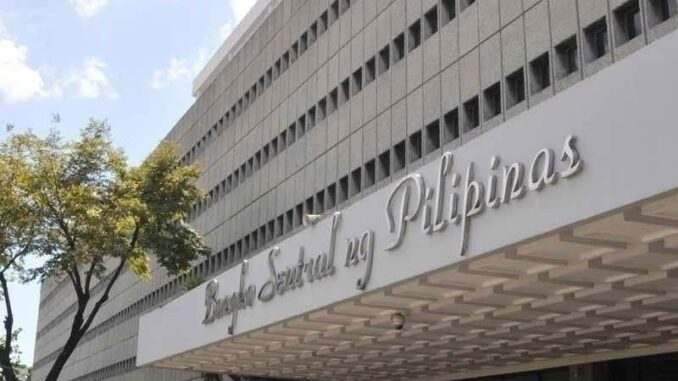
In poll of bank economists
MANILA, Philippines — The Bangko Sentral ng Pilipinas (BSP) will likely continue its monetary easing cycle as analysts expect the Monetary Board to cut borrowing costs by 25 basis points in its upcoming meeting this week.
HSBC economist for ASEAN Aris Dacanay said the BSP would likely lower interest rates by a quarter of a percentage point on Oct. 16, bringing the key policy rate down to six percent.
“Monetary policy is on the move in the Philippines. The Fed’s surprise 50-basis-point rate cut in September opened the door for the BSP to quicken its easing cycle,” Dacanay said.
According to Dacanay, the improving inflation outlook would provide the BSP room to ease policy further in the coming meetings and in 2025, especially with inflation falling to 1.9 percent in September.
India’s decision to lift its export curbs on rice is also expected to bring further relief to the Philippines, where rice accounts for nine percent of the consumer price index (CPI) basket, Dacanay said.
“Better global supply conditions should loosen things up for retail rice prices to finally slide. Not only does this give the BSP room to pick up the pace of easing, but it will also loosen the budgets of lower to middle-income households and, thus, boost private demand,” he said.
Dacanay said they expect the BSP to cut its key policy rate by another 25 basis points in its meeting on Dec. 19 to 5.75 percent.
The British banking giant also expects the central bank to slash rates by 25 basis points in each of the first three meetings next year, bringing the key rate to five percent by the second quarter of 2025.
Moreover, the BSP will likely cut banks’ reserve requirement ratio (RRR) by 200 basis points in the first quarter next year. This should bring down the level of deposits banks are required to keep with the central bank to five percent.
Angelo Taningco, research division head at Security Bank, said he also expects the central bank to cut rates by 25 basis points on Wednesday.
“Among the factors for this potential decision include Philippine inflation being well within target, resilient gross domestic product (GDP) growth and expectations for Fed to gradually reduce rates by 25 basis points next month,” Taningco said.
Jun Neri, lead economist at Bank of the Philippine Islands, similarly believes the central bank will opt for a 25-basis-point reduction this week, citing the decline in September inflation.
However, Neri cautioned against a more aggressive cut, pointing out that risks such as supply disruptions and potential weather-related events like La Niña still pose threats to inflation.
“A gradual reduction in the policy rate would help the economy withstand the impact of these risks in case they materialize,” Neri said.
Economic activity and growth prospects also suggest that aggressive rate cuts are not necessary, Neri said.
“Election-related spending, better weather and slower inflation in the coming months are likely to underpin more solid growth prints, reducing the need for massive rate cuts,” Neri added.
China Banking Corp. also believes that the Monetary Board will lower the benchmark interest rate by 25 basis points to six percent on Oct. 16 due to easing inflation and the half-a-percentage-point reduction by the US Federal Reserve last month.
“However, the BSP may opt for a small cut, mindful of the impact of geopolitical tensions in the Middle East on the inflation outlook, the recent depreciation of the peso against the dollar and the repricing of Fed rate cut expectations,” it said.
China Bank noted that the peso has depreciated back to the 57 level against the dollar due to markets pulling back their expectations of another 50-basis-point cut by the US Fed this year.
A 25-basis-point cut by the BSP on Wednesday would keep its interest rate differential with Fed’s policy rate at 100 basis points. This would exert less downward pressure on the peso, China Bank said.


Be the first to comment